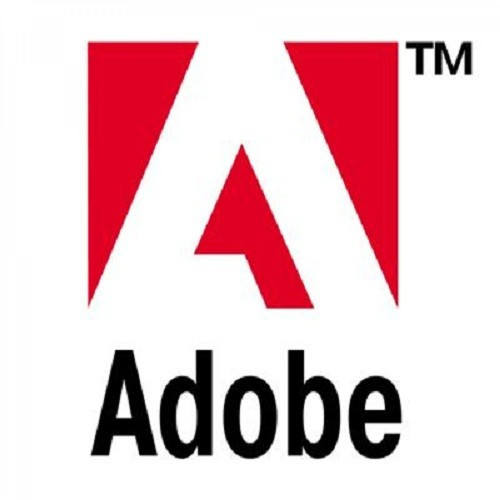HTML5 on the Rise: What Does it Mean for Adobe Flash, Creative Suite?

Adobe is facing intense rivalry from HTML5, which could make its Flash less relevant and in turn spell tough times ahead for Creative Suite.
Adobe Creative Suite (CS) is a collection of graphic design, video editing, and web development applications made by Adobe Systems. The collection consists of Adobe's applications (e.g., Photoshop, Acrobat, InDesign), that are based on various technologies (e.g., PostScript, PDF, Flash). The latest version, Adobe Creative Suite 5.5 (CS5.5), was released on April 12, 2011.
The key trend hurting CS is there is less reason to upgrade with each successive release, coupled with new standards, specifically HTML5, which is expected to lessen the relevance of Flash and ultimately of CS.
Adobe, which gets about 80 percent of its revenue from CS and Acrobat, recently changed its CS release cycle to annual from the historical 18 month standard. Though the move was likely to encourage more customers to stay current on maintenance, it may somewhat temper the revenue growth profile.
For the second quarter, Adobe did report better-than-expected Creative & Interactive revenues of $433 million, which topped the Street's expectation of $403 million. Adobe indicated that the recent 5.5 interim releases have sustained the run rate of the version 5 cycle, and more importantly is attracting new users. However, Adobe did not quantify subscription sales or license units.
Analysts fear that though CS5.5 off to a good start, demand is likely to be front end-loaded. The trend suggests that CS product cycles were strong out of the gate, but fail to sustain the momentum. For instance, CS5 started strong but then fizzled out.
For the third quarter, Adobe expects its Creative & Interactive and Digital Media businesses to be flat to slightly up from the second quarter.
HTML5 Gaining Momentum
On the other hand, HTML5 is gaining momentum each day as tech giants such as Google, Microsoft, Apple, and Facebook are supporting it. In addition, growing adoption of HTML5 on the Web lessens the reliance of developers on Flash. Microsoft recently said that Windows 8 applications will be built on HTML5 and Javascript.
Search giant Google, which still supports Flash on its Android devices, shifted away from Google Gears to HTML5 for Web application development.
California-based Apple's move to ban Flash from its mobile devices and preference for HTML5 has been well known.
In addition, Facebook has committed to HTML5 for its mobile strategy in order to maximize its reach across mobile devices, and music service Pandora has just ditched Flash in favor of HTML5.
Meanwhile, HTML5 is also expanding its presence in the design schools, which will churn out increasing numbers of HTML5 professionals each year.
We checked in with about a dozen schools involved in Web design and programming and found that most are currently teaching HTML5 at varying degrees, FBR Capital Markets analyst David Hilal wrote in a note to clients.
Our conversations with these schools give us increased confidence in our belief that HTML5 is the future of the Web, Hilal added.
HTML5 Browsers Gain Share
The emergence of HTML5 has given developers an alternative to Flash, which is still one of the most heavily used tools for developing websites and creating games.
The developers would be leaning more towards HTML5 as the share of potential addressable market of the Web standard grows larger.
As of June 2011, HTML5 is supported by 44 percent of deployed browsers, which is up from 35 percent six months ago and 22 percent 12 months ago, according to FBR Capital Markets.
We expect HTML5 to attract more developer attention as the share of Internet browsers with HTML5 support increases, said Hilal adding that share of browsers with HTML support to accelerate with the recent general availability of Internet Explorer 9 (IE9) this past March.
Adobe's Mobile Strategy
Adobe has changed its mobile strategy twice over the past several years, and it currently lacks a clear, concise, direct monetization strategy around mobile devices.
The software maker initially charged device makers to include Flash Lite in their device, but later offered Flash products on mobile devices for free. It partnered with carriers to charge users for viewing videos on a subscription basis.
However, this model failed as initial sales for video subscription services were lackluster and carriers focused more on charging for delivering the content, as more users access internet via their mobile devices.
Meanwhile, Adobe recently released an update to its Flash Builder and Flex framework that lets developers create and deploy apps for Apple's iOS and RIM's BlackBerry PlayBook OS in addition to Android.
Currently, Adobe benefits from sales of CS5 products for creating video and gaming contents for mobile devices, charging for video streaming, and Omniture-related services.
But, analysts are skeptical that it still lacks a clear mobile strategy to defend its Flash technology. They are concerned that whether Adobe would survive in a market, where top smartphone platforms, such as Apple's iOS, do not fully embrace Flash technology and are supporting HTML5.
In a related development, Apple has disabled hardware acceleration for Adobe Flash applications in its OS X Lion desktop operating system. In other words, if a Mac user runs any application using Flash, the CPU usage will be higher, especially when playing games developed via Flash.
Though HTML5 would not altogether kill Flash, it could certainly end the monopoly status enjoyed by Flash, thereby affecting CS. Earlier, it used to be that nearly all interactive graphics and video on the Web were delivered by Flash technology.
So, the ultimate question comes to the mind is can Adobe be a player in the HTML5 market.
Hilal said: Sure, but as Flash loses its stranglehold, we believe Adobe's competitive position will weaken and it will be a share loser.
Hilal has an underperform rating and price target of $28 on Adobe stock.
© Copyright IBTimes 2024. All rights reserved.




















